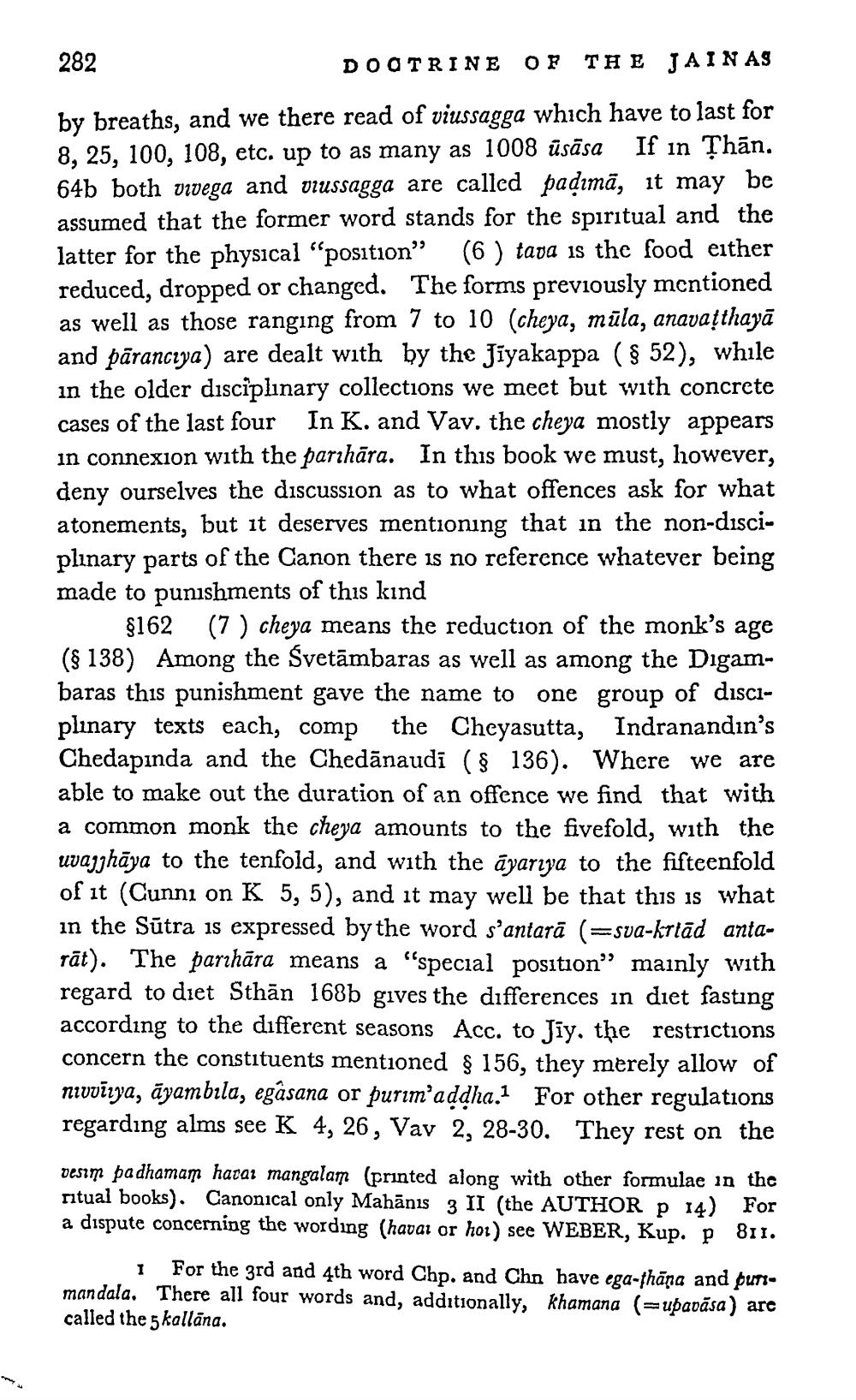________________
282
DOCTRINE OF THE JAIN AS
by breaths, and we there read of viussagga which have to last for 8, 25, 100, 108, etc. up to as many as 1008 ūsāsa If in Thān. 64b both vivega and viussagga are called padımā, it may be assumed that the former word stands for the spiritual and the latter for the physical "position" (6) tada is the food either reduced, dropped or changed. The forms previously mentioned as well as those ranging from 7 to 10 (cheya, mūla, anavatthayā and pāranciya) are dealt with by the Jiyakappa ( § 52), while in the older disciplinary collections we meet but with concrete cases of the last four In K. and Vav. the cheya mostly appears in connexion with the parihāra. In this book we must, however, deny ourselves the discussion as to what offences ask for what atonements, but it deserves mentioning that in the non-disciplinary parts of the Canon there is no reference whatever being made to punishments of this kind
$162 (7) cheya means the reduction of the monk's age (§ 138) Among the Svetāmbaras as well as among the Digambaras this punishment gave the name to one group of disciplinary texts each, comp the Cheyasutta, Indranandın's Chedapında and the Chedānaudi (136). Where we are able to make out the duration of an offence we find that with a common monk the cheya amounts to the fivefold, with the uvagghāya to the tenfold, and with the āyarıya to the fifteenfold of it (Cunni on K 5,5), and it may well be that this is what in the Sūtra is expressed by the word s'antarā (=sva-krtād antarāt). The parihāra means a "special position" mainly with regard to diet Sthān 168b gives the differences in diet fasting according to the different seasons Acc. to Jiy, the restrictions concern the constituents mentioned § 156, they merely allow of nivvīıya, āyambıla, egâsana or purim'addha. For other regulations regarding alms see K 4, 26, Vav 2, 28-30. They rest on the
desim pa dhaman hacai mangalam (printed along with other formulae in the ritual books). Canonical only Mahānis 3 II (the AUTHOR P 14) For a dispute concerning the wording (havai or hor) see WEBER, Kup. p 811.
1 For the 3rd and 4th word Chp. and Chn have ega-thāna and purimandala. There all four words and, additionally, Khamana (=upadāsa) arc called the 5 kallāna.




